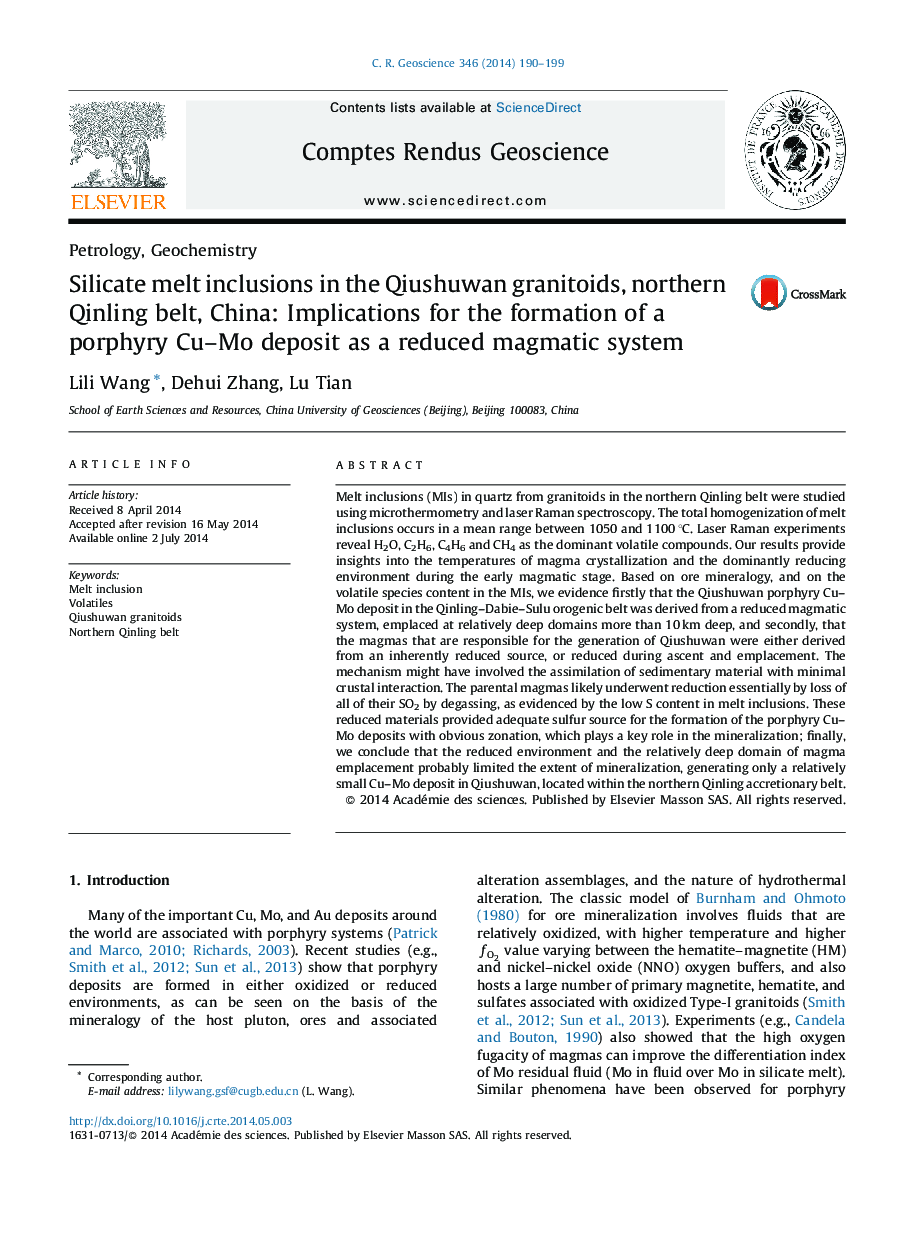| کد مقاله | کد نشریه | سال انتشار | مقاله انگلیسی | نسخه تمام متن |
|---|---|---|---|---|
| 4462166 | 1621555 | 2014 | 10 صفحه PDF | دانلود رایگان |

Melt inclusions (MIs) in quartz from granitoids in the northern Qinling belt were studied using microthermometry and laser Raman spectroscopy. The total homogenization of melt inclusions occurs in a mean range between 1050 and 1100 °C. Laser Raman experiments reveal H2O, C2H6, C4H6 and CH4 as the dominant volatile compounds. Our results provide insights into the temperatures of magma crystallization and the dominantly reducing environment during the early magmatic stage. Based on ore mineralogy, and on the volatile species content in the MIs, we evidence firstly that the Qiushuwan porphyry Cu–Mo deposit in the Qinling–Dabie–Sulu orogenic belt was derived from a reduced magmatic system, emplaced at relatively deep domains more than 10 km deep, and secondly, that the magmas that are responsible for the generation of Qiushuwan were either derived from an inherently reduced source, or reduced during ascent and emplacement. The mechanism might have involved the assimilation of sedimentary material with minimal crustal interaction. The parental magmas likely underwent reduction essentially by loss of all of their SO2 by degassing, as evidenced by the low S content in melt inclusions. These reduced materials provided adequate sulfur source for the formation of the porphyry Cu–Mo deposits with obvious zonation, which plays a key role in the mineralization; finally, we conclude that the reduced environment and the relatively deep domain of magma emplacement probably limited the extent of mineralization, generating only a relatively small Cu–Mo deposit in Qiushuwan, located within the northern Qinling accretionary belt.
Journal: Comptes Rendus Geoscience - Volume 346, Issues 7–8, July–August 2014, Pages 190–199